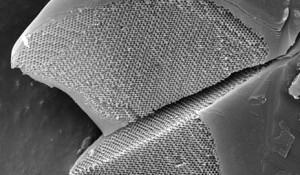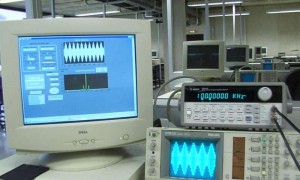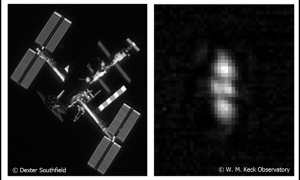What happens when Newton’s third law is broken?
Even if you don’t know it by name, everyone is familiar with Newton’s third law, which states that for every action, there is an equal and opposite reaction. This idea can be seen in many everyday situations, such as when walking, where a person’s foot pushes against the ground, and the ground pushes back with an equal and opposite force. Newton’s third law is also essential for understanding and developing automobiles, airplanes, rockets, boats, and many other technologies.
Even though it is one of the fundamental laws of physics, Newton’s third law can be violated in certain nonequilibrium (out-of-balance) situations. When two objects or particles violate the third law, they are said to have nonreciprocal interactions. Violations can occur when the environment becomes involved in the interaction between the two particles in some way, such as when an environment moves with respect to the two particles. (Of course, Newton’s law still holds for the complete “particles-plus-environment” system.)
Although there have been numerous experiments on particles with nonreciprocal interactions, not as much is known about what’s happening on the microscopic level—the statistical mechanics—of these systems.
In a new paper published in Physical Review X, Alexei Ivlev, et al., have investigated the statistical mechanics of different types of nonreciprocal interactions and discovered some surprising results—such as that extreme temperature gradients can be generated on the particle scale.
“I think the greatest significance of our work is that we rigorously showed that certain classes of essentially nonequilibrium systems can be exactly described in terms of the equilibrium’s statistical mechanics (i.e., one can derive a pseudo-Hamiltonian which describes such systems),” Ivlev, at the Max Planck Institute for Extraterrestrial Physics in Garching, Germany, told Phys.org. “One of the most amazing implications is that, for example, one can observe a mixture of two liquids in detailed equilibrium, yet each liquid has its own temperature.”
One example of a system with nonreciprocal interactions that the researchers experimentally demonstrated in their study involves charged microparticles levitating above an electrode in a plasma chamber. The violation of Newton’s third law arises from the fact that the system involves two types of microparticles that levitate at different heights due to their different sizes and densities. The electric field in the chamber drives a vertical plasma flow, like a current in a river, and each charged microparticle focuses the flowing plasma ions downstream, creating a vertical plasma wake behind it.
Although the repulsive forces that occur due to the direct interactions between the two layers of particles are reciprocal, the attractive particle-wake forces between the two layers are not. This is because the wake forces decrease with distance from the electrode, and the layers are levitating at different heights. As a result, the lower layer exerts a larger total force on the upper layer of particles than the upper layer exerts on the lower layer of particles. Consequently, the upper layer has a higher average kinetic energy (and thus a higher temperature) than the lower layer. By tuning the electric field, the researchers could also increase the height difference between the two layers, which further increases the temperature difference.
“Usually, I’m rather conservative when thinking on what sort of ‘immediate’ potential application a particular discovery (at least, in physics) might have,” Ivlev said. “However, what I am quite confident of is that our results provide an important step towards better understanding of certain kinds of nonequilibrium systems. There are numerous examples of very different nonequilibrium systems where the action-reaction symmetry is broken for interparticle interactions, but we show that one can nevertheless find an underlying symmetry which allows us to describe such systems in terms of the textbook (equilibrium) statistical mechanics.”
While the plasma experiment is an example of action-reaction symmetry breaking in a 2D system, the same symmetry breaking can occur in 3D systems, as well. The scientists expect that both types of systems exhibit unusual and remarkable behavior, and they hope to further investigate these systems more in the future.
“Our current research is focused on several topics in this direction,” Ivlev said. “One is the effect of the action-reaction symmetry breaking in the overdamped colloidal suspensions, where the nonreciprocal interactions lead to a remarkably rich variety of self-organization phenomena (dynamical clustering, pattern formation, phase separation, etc.). Results of this research may lead to several interesting applications. Another topic is purely fundamental: how one can describe a much broader class of ‘nearly Hamiltonian’ nonreciprocal systems, whose interactions almost match with those described by a pseudo-Hamiltonian? Hopefully, we can report on these results very soon.”
References: www.phys.org





